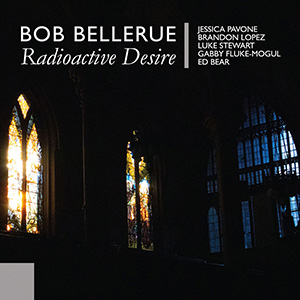 Described as "free chamber music in feedback environments," this massive double CD from New York based artist Bob Bellerue is a perfect blend of structure, improvisation, and chance. Based around rough compositional structures, but left wide open to improvisation, the five instrumentalists, along with Bellerue helming electronics and production, create a massive noise that distinctly reflects the time, place, and conditions in which this material was recorded.
Described as "free chamber music in feedback environments," this massive double CD from New York based artist Bob Bellerue is a perfect blend of structure, improvisation, and chance. Based around rough compositional structures, but left wide open to improvisation, the five instrumentalists, along with Bellerue helming electronics and production, create a massive noise that distinctly reflects the time, place, and conditions in which this material was recorded.
Elevator Bath
Recording in two sessions on July 29 and 30 of 2020 at the First Unitarian Congregational Society of Brooklyn, the physical space in which the performance occurred works like another piece of the ensemble. The players, including saxophonist Ed Bear, double bassists Brandon Lopez and Luke Stewart, violinist Gabby Fluke-ogul, and viola/organist Jessica Pavone all appear together on three of the six pieces (two of them are Bellerue solo, and one features just him and Pavone on organ), but even in these three works, it is often hard to discern specific players.
The expansive, bleak "The Longest Year" does have some identifiable buzzing strings from Fluke-Mogul and Pavone, but the space and production give it an unnatural, otherworldly color to the sound. The scraping and grinding sounds build into dense clusters not unlike some of Hermann Nitsch's early scores. "Bass Feedback" is, unsurprisingly, bass heavy, but also has some painfully shrill sections as well. Instrumentation is obvious at times, but the focus is on the abstract tones. The title piece shifts from harsh, distorted sax to scraped strings and a nasal insect buzz, later bouncing between horror film strings and dense noise walls.
“Organ Feedback,” featuring just Bellerue and Pavone, is the closest to melody that Radioactive Desire gets. At times almost synth-like, the layered tones blend together beautifully through the rather steady overall dynamic. On the other hand, Bellerue's two solo pieces are far closer to harsh noise than anything else. “Empty Feedback,” which is just room noise and unattended instruments, builds from hissy buzzes to machinery like hums to painfully shrill feedback. Everything from stabbing high frequencies to dense steady walls of sound appear. The near 40-minute conclusion "Metal Gambuh" is just that: a suling gambuh flute, metal, and feedback. Bathed in heavy natural reverb, it is a violent outburst of frustration, with oppressive sub bass underscoring the fuzzy crackles and droning noise.
Radioactive Desire is by its very nature an intense work. Recorded in a massive space, in oppressive summer temperatures after a long stretch of lockdown, and spreading out over two hours, there is a lot to absorb. With Bellerue leading the five performers in their improvisation, the intensity of this work is not just in the composition, but in the performance, as well as the space in which it was recorded. Everything is huge, but with such nuance that it never becomes too much to take in, with Bellerue's guiding hand beautifully guiding the material through all its disparate facets.
Samples can be found here.
 These two albums from Seah, also known as multimedia artist and philosopher Chelsea Heikes, seemingly draw from different elemental categories, which ends up setting the foundation for the sounds contained within. The first, Conduits of the Hydrosphere, clearly draws from water while Clouds and Spectres is appropriately expansive, vapor-like, and ghostly at times. Released separately, they feel like complementary works that act as variations on sonic exploration.
These two albums from Seah, also known as multimedia artist and philosopher Chelsea Heikes, seemingly draw from different elemental categories, which ends up setting the foundation for the sounds contained within. The first, Conduits of the Hydrosphere, clearly draws from water while Clouds and Spectres is appropriately expansive, vapor-like, and ghostly at times. Released separately, they feel like complementary works that act as variations on sonic exploration.

 Finally seeing the light of day after two years of production related delays, with the recordings dating back even longer than that, this collaboration between Daniel Burke (IOS) and the late Stefan Weisser (Z'EV) could almost be a time capsule, except the sound of it is entirely timeless. Recorded and mixed between 2008 and 2012, the two lengthy pieces that make up this self-titled album clearly bear the mark of both individuals, but mesh together beautifully in the very different sounding sides of the record.
Finally seeing the light of day after two years of production related delays, with the recordings dating back even longer than that, this collaboration between Daniel Burke (IOS) and the late Stefan Weisser (Z'EV) could almost be a time capsule, except the sound of it is entirely timeless. Recorded and mixed between 2008 and 2012, the two lengthy pieces that make up this self-titled album clearly bear the mark of both individuals, but mesh together beautifully in the very different sounding sides of the record. A 10" record rigidly divided into four different pieces (each mostly around four minutes in length), this new work from the enigmatic sounding, long-standing UK project is mostly centered around the same authoritarian lyrical elements, but each differs significantly in their compositional approach. A complex mix of styles define each piece, neither of which are too similar to another, but are unquestionably Contrastate, and showcases all of the unique sounds they are known for.
A 10" record rigidly divided into four different pieces (each mostly around four minutes in length), this new work from the enigmatic sounding, long-standing UK project is mostly centered around the same authoritarian lyrical elements, but each differs significantly in their compositional approach. A complex mix of styles define each piece, neither of which are too similar to another, but are unquestionably Contrastate, and showcases all of the unique sounds they are known for. Written and recorded immediately following 2021's Even if it Takes a Lifetime, Chicago's Anatomy of Habit's newest album is sonically similar, however it does not sound like the second half of a double album. Instead, Black Openings is a stand-alone work that features the same sense of consistency but overall sees the band further refining and expanding their sound, and in this case returning to the bleakness that pervaded their earlier works so brilliantly.
Written and recorded immediately following 2021's Even if it Takes a Lifetime, Chicago's Anatomy of Habit's newest album is sonically similar, however it does not sound like the second half of a double album. Instead, Black Openings is a stand-alone work that features the same sense of consistency but overall sees the band further refining and expanding their sound, and in this case returning to the bleakness that pervaded their earlier works so brilliantly. Mike Griffin's Parashi project has never been an easy one to pin down as far as expectations go. While never predictable, the material was usually abstract and not musical in the conventional sense, existing somewhere on a continuum between harsh noise and less abrasive, almost early Cabaret Voltaire like treatments of tapes and effects. For Vinegar Baths, he certainly retains these elements, but the emphasis is on guitar, bass, and surprisingly, vocals.
Mike Griffin's Parashi project has never been an easy one to pin down as far as expectations go. While never predictable, the material was usually abstract and not musical in the conventional sense, existing somewhere on a continuum between harsh noise and less abrasive, almost early Cabaret Voltaire like treatments of tapes and effects. For Vinegar Baths, he certainly retains these elements, but the emphasis is on guitar, bass, and surprisingly, vocals.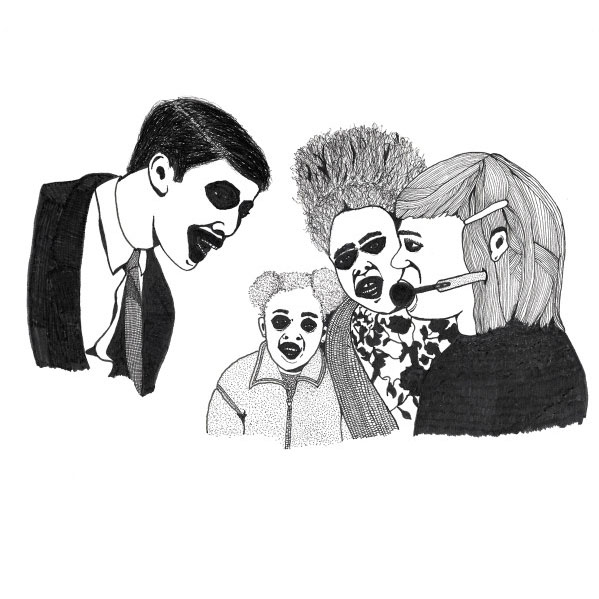 With a debut in 2007, the enigmatic Darksmith has a relatively dense body of work centered around manipulated tapes and electronic excursions. Imposter is one in a series of releases sharing these qualities, as well as consistently strange artistic consistency visually. Unexpecting changes from meditative to chaotic are the norm in this chaotic, yet beautiful disc.
With a debut in 2007, the enigmatic Darksmith has a relatively dense body of work centered around manipulated tapes and electronic excursions. Imposter is one in a series of releases sharing these qualities, as well as consistently strange artistic consistency visually. Unexpecting changes from meditative to chaotic are the norm in this chaotic, yet beautiful disc.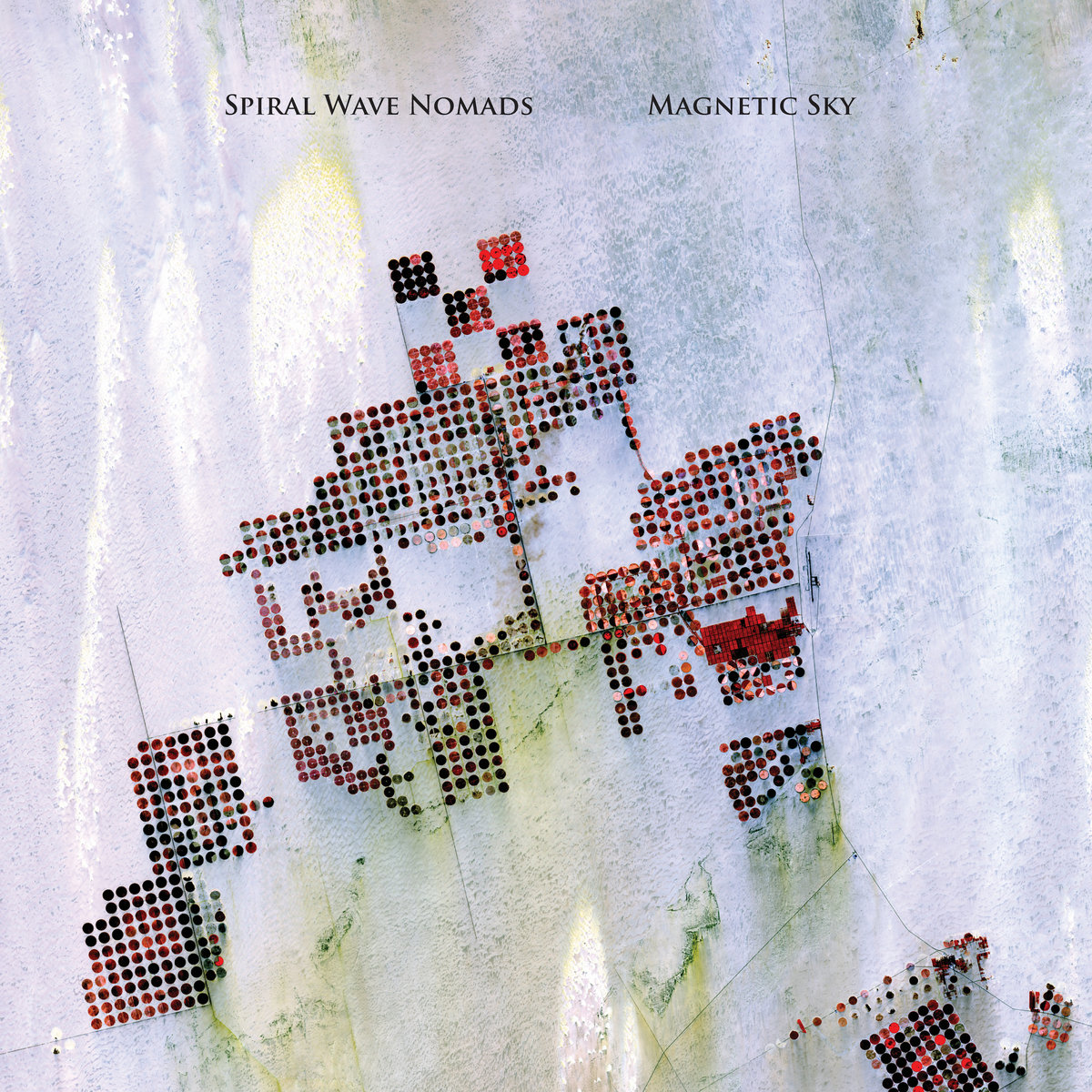 Prolific artists on their own, the duo of Eric Hardiman (guitar/bass/electronics) and Michael Kiefer (drums/keyboards) have still managed to put out their third album in four years as Spiral Wave Nomads. The spacey, psychedelic tinged guitar/bass/drum excursions are of course expected by now, but the inclusion of additional electronic instrumentation makes Magnetic Sky even greater.
Prolific artists on their own, the duo of Eric Hardiman (guitar/bass/electronics) and Michael Kiefer (drums/keyboards) have still managed to put out their third album in four years as Spiral Wave Nomads. The spacey, psychedelic tinged guitar/bass/drum excursions are of course expected by now, but the inclusion of additional electronic instrumentation makes Magnetic Sky even greater.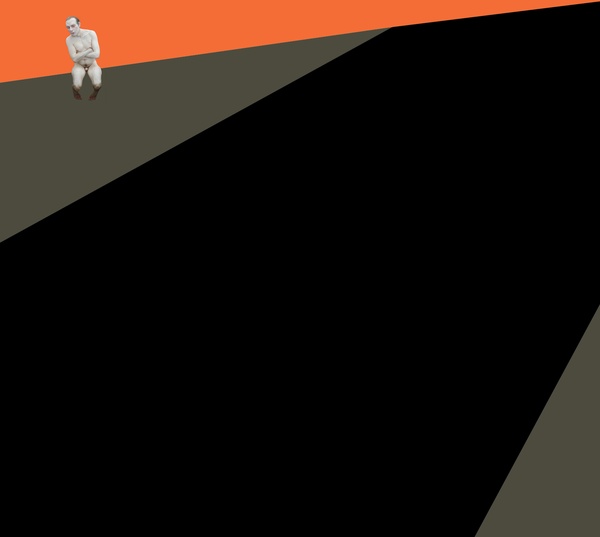 The opening title piece of Schatten Ohne Licht features Tietchens blending quiet tones with distant, low-end rumbles, with both the higher and lower frequencies layering and building throughout. Towards the half-way point he switches things around, using the same components but swapping around the arrangements, becoming a different sounding piece entirely. "Anthroporsaurus" follows a similar approach, pairing floating hints of melody with deep space pulsations and a machinery like chug, although the sum total of the parts is more delicate than anything else.
The opening title piece of Schatten Ohne Licht features Tietchens blending quiet tones with distant, low-end rumbles, with both the higher and lower frequencies layering and building throughout. Towards the half-way point he switches things around, using the same components but swapping around the arrangements, becoming a different sounding piece entirely. "Anthroporsaurus" follows a similar approach, pairing floating hints of melody with deep space pulsations and a machinery like chug, although the sum total of the parts is more delicate than anything else.
 On their second album this trio continues the sound of their 2018's self-titled debut, expanding the dense, continually flowing sound showcased there even further. Across three instrumentals (and one shorter vocal based song), More Klementines effortlessly jump between expansive improvised passages with taut, motorik rhythmic sections, resulting in a perfect junction of two very different styles.
On their second album this trio continues the sound of their 2018's self-titled debut, expanding the dense, continually flowing sound showcased there even further. Across three instrumentals (and one shorter vocal based song), More Klementines effortlessly jump between expansive improvised passages with taut, motorik rhythmic sections, resulting in a perfect junction of two very different styles. Previously based in Chicago, Steve Fors has build a small, but strong discography first as half of the duo the Golden Sores, and then on his own as Aeronaut. Now based in Switzerland, It's Nothing, but Still is his first full length solo work under his own name. It certainly feels like a new album, but traces of his previous projects can be heard, which is for the best. Lush with both beauty and darkness, it is nuanced and fascinating.
Previously based in Chicago, Steve Fors has build a small, but strong discography first as half of the duo the Golden Sores, and then on his own as Aeronaut. Now based in Switzerland, It's Nothing, but Still is his first full length solo work under his own name. It certainly feels like a new album, but traces of his previous projects can be heard, which is for the best. Lush with both beauty and darkness, it is nuanced and fascinating.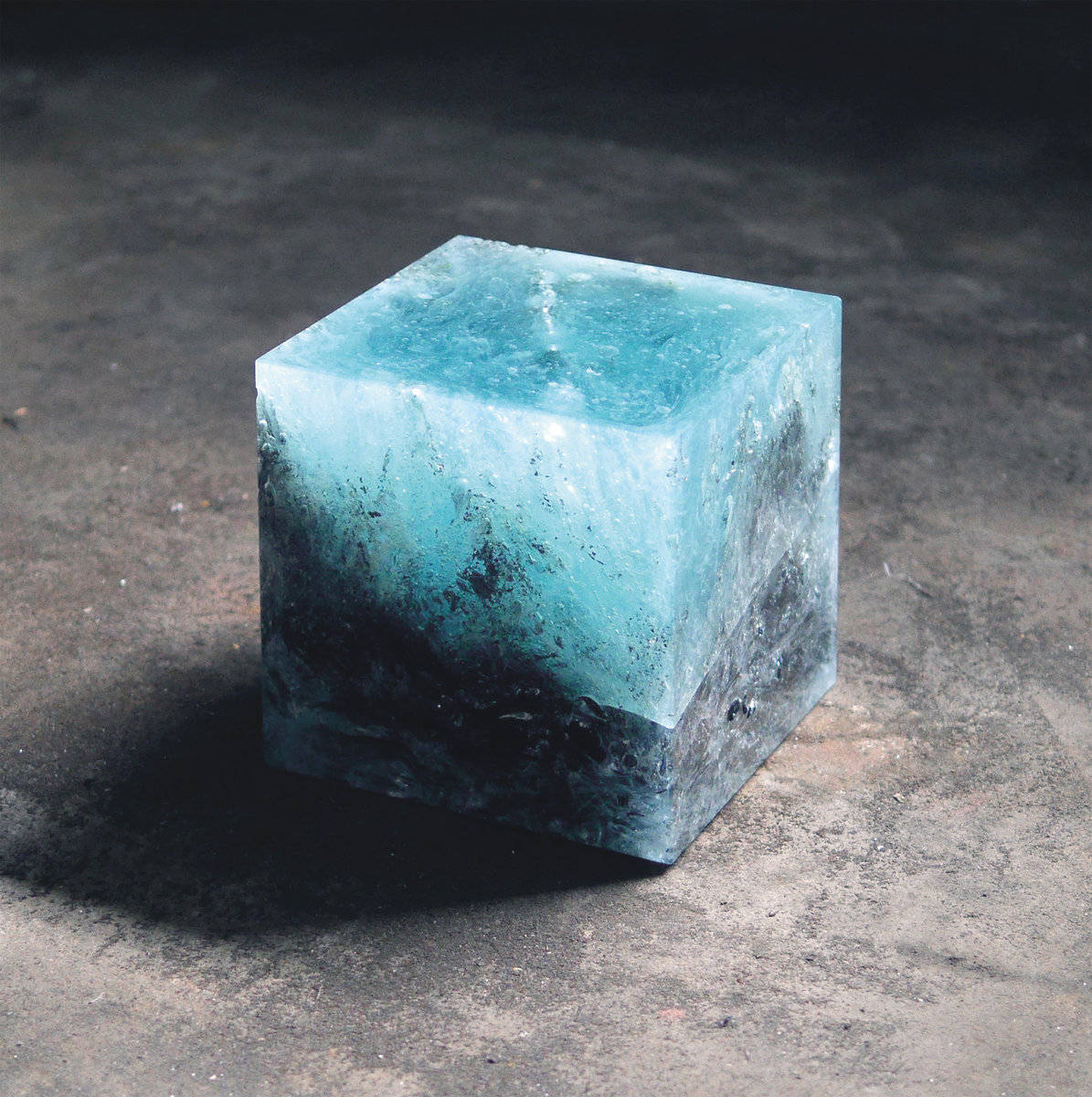 On the trio's first album in seven years (the largest period of dormancy ever for them), Locrian simultaneously return to their origins while evolving and refining their sound forward. Stripped back to the barest essence of their sound but with some 17 years of evolution, New Catastrophism feels both like a reset but also a culmination of everything they have accomplished thus far.
On the trio's first album in seven years (the largest period of dormancy ever for them), Locrian simultaneously return to their origins while evolving and refining their sound forward. Stripped back to the barest essence of their sound but with some 17 years of evolution, New Catastrophism feels both like a reset but also a culmination of everything they have accomplished thus far. Similar to his recent works Family Secret and House Blessing, the newest work from drummer/percussionist Jon Mueller features little in the way of overt rhythms or obvious instrumentation. Instead, The Future is Unlimited, Always captures Mueller at his most spacious: layers of frequencies and tones that are as engaging as they are mysterious, and capturing more than just audio, but a deeper sense of existence.
Similar to his recent works Family Secret and House Blessing, the newest work from drummer/percussionist Jon Mueller features little in the way of overt rhythms or obvious instrumentation. Instead, The Future is Unlimited, Always captures Mueller at his most spacious: layers of frequencies and tones that are as engaging as they are mysterious, and capturing more than just audio, but a deeper sense of existence.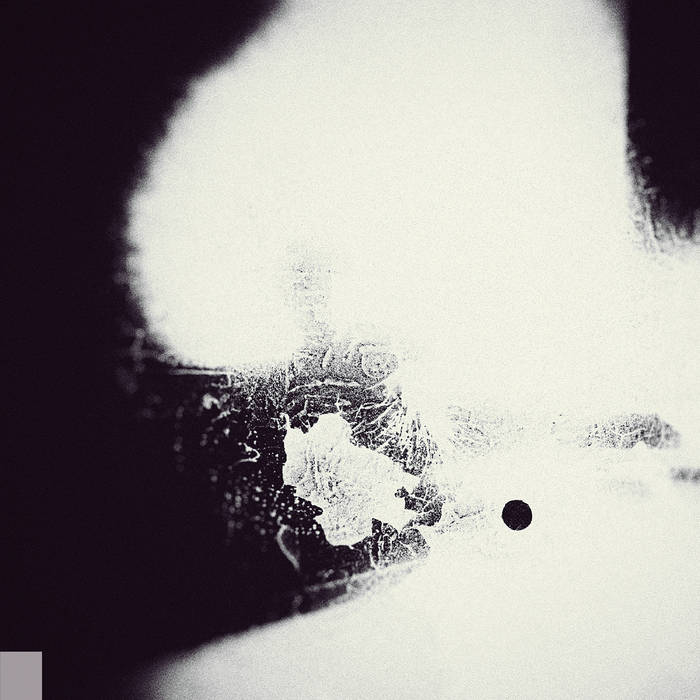 Following a multitude of self-released tapes and digital releases, Vagrancies is Austin, Texas's Andrew Anderson's first CD based work. Ostensibly created by the instrumentation and sources listed in the disc's liner notes, Anderson's treatment renders them largely unidentifiable, instead using them to construct something else entirely. Consisting of four long-form pieces connected with shorter interludes, Vagrancies covers a lot of ground, with an impressive amount of variety from piece to piece, but still a strong sense of continuity from one piece to the next.
Following a multitude of self-released tapes and digital releases, Vagrancies is Austin, Texas's Andrew Anderson's first CD based work. Ostensibly created by the instrumentation and sources listed in the disc's liner notes, Anderson's treatment renders them largely unidentifiable, instead using them to construct something else entirely. Consisting of four long-form pieces connected with shorter interludes, Vagrancies covers a lot of ground, with an impressive amount of variety from piece to piece, but still a strong sense of continuity from one piece to the next.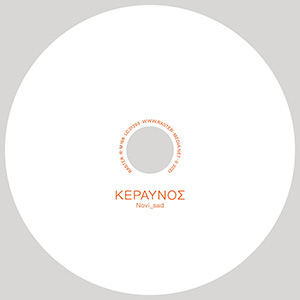 The title of the latest Novi_sad work roughly translates to lightning or thunder as related to Zeus and is a wonderfully fitting title for this album. Based on environmental sounds recorded on five different continents, Thanasis Kaproulias’s latest album is neither pure field recordings, nor is it the product of laborious processing and treatments. Instead it sits nestled somewhere between the two: some segments are clearly recordings of rainstorms or birds, but others are shaped into blasts of noise or melody, sometimes within the span of a few minutes, conjuring beauty and fear much in the way a thunderstorm does.
The title of the latest Novi_sad work roughly translates to lightning or thunder as related to Zeus and is a wonderfully fitting title for this album. Based on environmental sounds recorded on five different continents, Thanasis Kaproulias’s latest album is neither pure field recordings, nor is it the product of laborious processing and treatments. Instead it sits nestled somewhere between the two: some segments are clearly recordings of rainstorms or birds, but others are shaped into blasts of noise or melody, sometimes within the span of a few minutes, conjuring beauty and fear much in the way a thunderstorm does. Initially intended to be a lockdown project based around recycling (and re-recycling) of sound sources, Stephen Meixner (Contrastate) ended up shifting the theme of A Silent War to a very specific one. Based on the worldwide ripples of the murder of George Floyd at the hands of a police officer gave a specific theme to an otherwise conceptually defined record. Featuring contributions by the other members of Contrastate, Ralf Wehowsky, Steve Pittis (Band of Pain) and more, the final product is as enthralling as it is bleak and depressing.
Initially intended to be a lockdown project based around recycling (and re-recycling) of sound sources, Stephen Meixner (Contrastate) ended up shifting the theme of A Silent War to a very specific one. Based on the worldwide ripples of the murder of George Floyd at the hands of a police officer gave a specific theme to an otherwise conceptually defined record. Featuring contributions by the other members of Contrastate, Ralf Wehowsky, Steve Pittis (Band of Pain) and more, the final product is as enthralling as it is bleak and depressing. A duo between California artists Victoria Shen and Bryan Day (by way of Nebraska), Error Theft Disco is noise in its purist sense. A disorienting blend of electronics, distortion, and found sounds that never settles down from the first few seconds, the constant flow gives the tape a captivating sense of inertia that functions well in the loud harsh noise vein as well as it does the nuanced, complex sound art one.
A duo between California artists Victoria Shen and Bryan Day (by way of Nebraska), Error Theft Disco is noise in its purist sense. A disorienting blend of electronics, distortion, and found sounds that never settles down from the first few seconds, the constant flow gives the tape a captivating sense of inertia that functions well in the loud harsh noise vein as well as it does the nuanced, complex sound art one. Described as "free chamber music in feedback environments," this massive double CD from New York based artist Bob Bellerue is a perfect blend of structure, improvisation, and chance. Based around rough compositional structures, but left wide open to improvisation, the five instrumentalists, along with Bellerue helming electronics and production, create a massive noise that distinctly reflects the time, place, and conditions in which this material was recorded.
Described as "free chamber music in feedback environments," this massive double CD from New York based artist Bob Bellerue is a perfect blend of structure, improvisation, and chance. Based around rough compositional structures, but left wide open to improvisation, the five instrumentalists, along with Bellerue helming electronics and production, create a massive noise that distinctly reflects the time, place, and conditions in which this material was recorded. Western Massachusetts' loudest deadhead Josh Landes has followed up his live set Unrelenting Barrage of Flowers and Amethyst Energy from last year with a new studio album (well, at 18 minutes, it counts as an album in the noisecore world) that furthers his legacy of intensity and absurdity. Balancing electronic blowouts with creative field recordings, it is another disc of explosive fun.
Western Massachusetts' loudest deadhead Josh Landes has followed up his live set Unrelenting Barrage of Flowers and Amethyst Energy from last year with a new studio album (well, at 18 minutes, it counts as an album in the noisecore world) that furthers his legacy of intensity and absurdity. Balancing electronic blowouts with creative field recordings, it is another disc of explosive fun.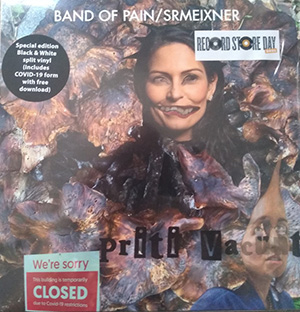 Taking a cue from the politicization of the COVID pandemic, Band of Pain (Steve Pittis) and Contrastate's Stephen Meixner teamed up for this collaborative single, with each taking the lead on a solo piece, and then a balanced collaboration to conclude. Heavily based on samples of speeches and news reports, it is certainly a politically charged work, but one that remains heavily rooted in both artists’ post-industrial and absurdist sensibilities.
Taking a cue from the politicization of the COVID pandemic, Band of Pain (Steve Pittis) and Contrastate's Stephen Meixner teamed up for this collaborative single, with each taking the lead on a solo piece, and then a balanced collaboration to conclude. Heavily based on samples of speeches and news reports, it is certainly a politically charged work, but one that remains heavily rooted in both artists’ post-industrial and absurdist sensibilities.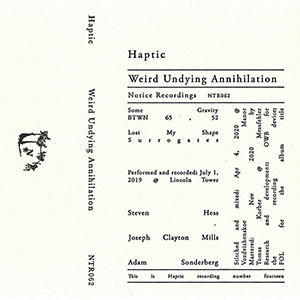 Recordings of sound art installations are always a bit troublesome, since it is an attempt to distill a spatial experience into a (usually) two channel stereo recording, meaning something is lost in translation. The latest work from the trio of Steven Hess, Joseph Clayton Mills, and Adam Sonderberg combines the intent and structure of an installation, but in the form of a live performance where each performer performed within their own specific space, and specifically intended for an external listening experience. While that may sound convoluted, it results in a tape that features an amazing sense of space and movement, even if it is just a recording.
Recordings of sound art installations are always a bit troublesome, since it is an attempt to distill a spatial experience into a (usually) two channel stereo recording, meaning something is lost in translation. The latest work from the trio of Steven Hess, Joseph Clayton Mills, and Adam Sonderberg combines the intent and structure of an installation, but in the form of a live performance where each performer performed within their own specific space, and specifically intended for an external listening experience. While that may sound convoluted, it results in a tape that features an amazing sense of space and movement, even if it is just a recording.
